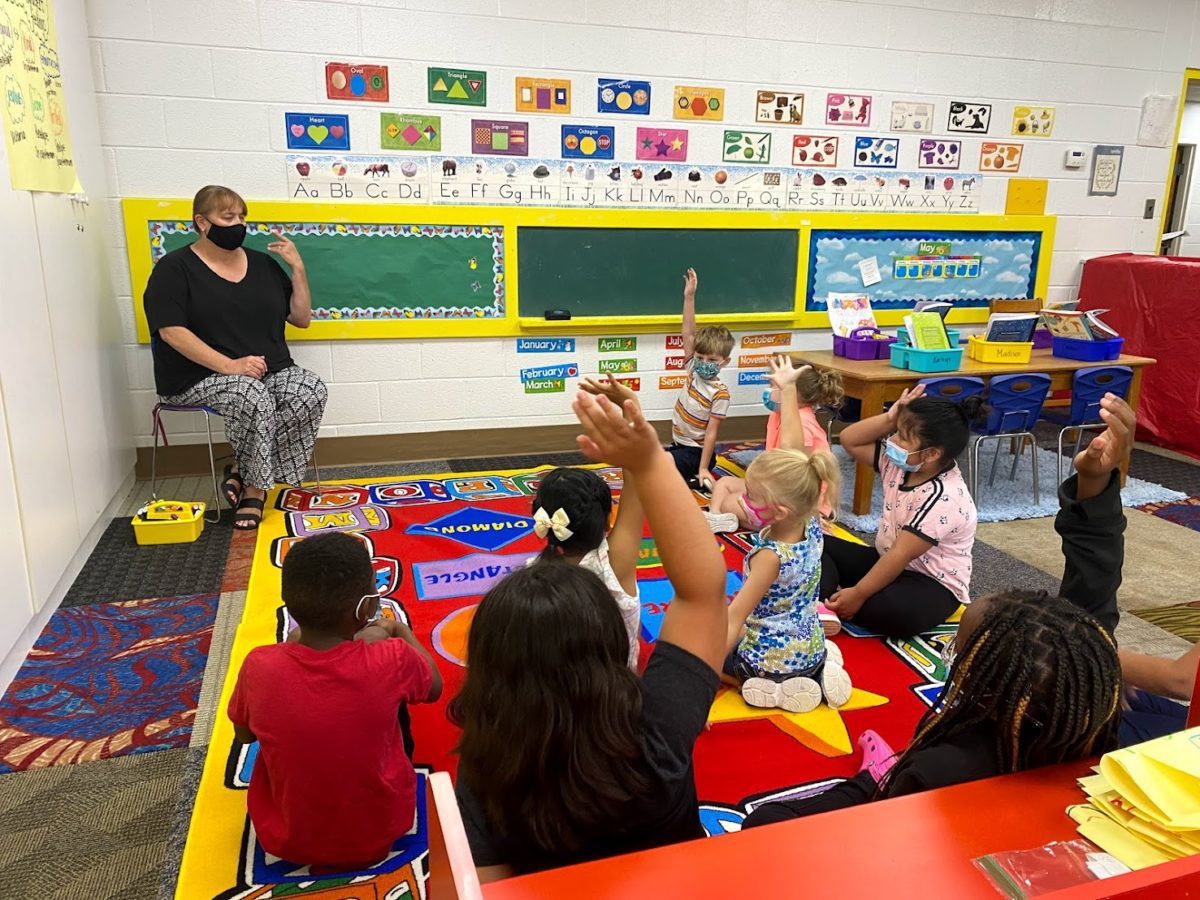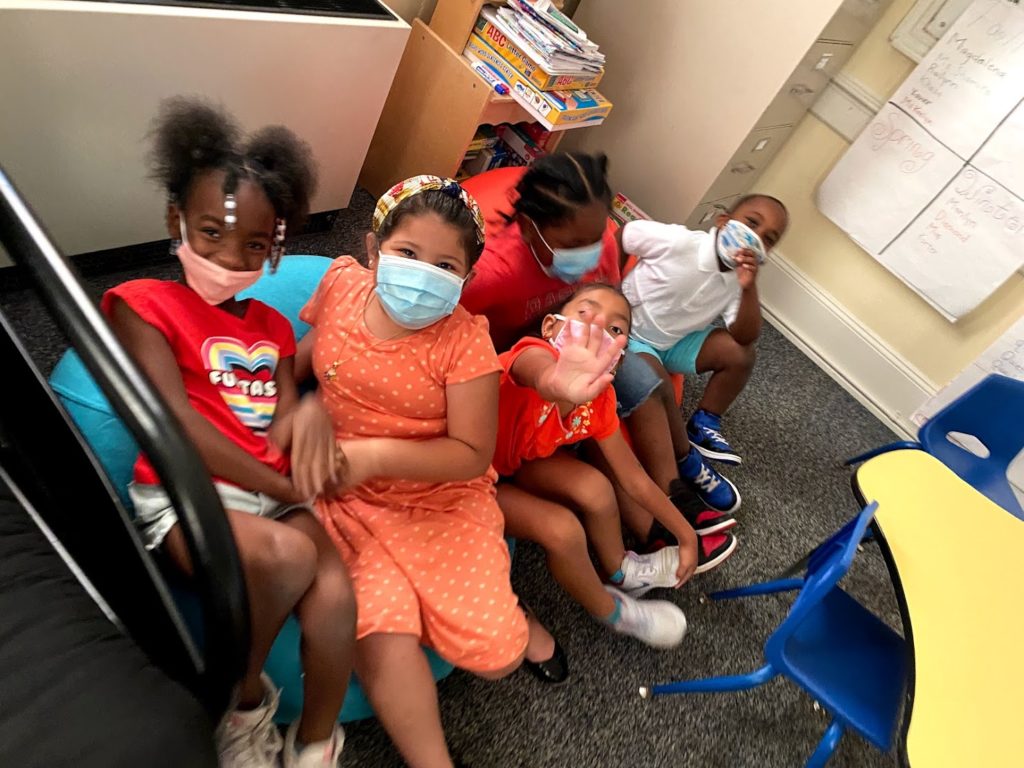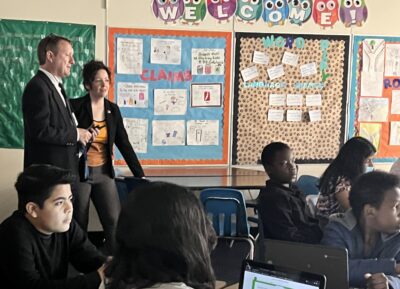

|
|
In 2012, it began with a vision in the head of a fellow at The Duke Endowment. What would happen if churches got involved with improving reading proficiency for young people?
A little over 10 years later, the results look promising for both student outcomes and parental choice, organizers say. The Duke Endowment is now investing substantially in studying what exactly is working and why – in the hopes that they may have discovered something that can be scaled across the state.
“There’s an element of whatever we’ve been doing, or we’ve been allowing to happen, that has worked,” said Kristen Richardson-Frick, an associate director at The Duke Endowment. “We want to continue that, but we also want to figure out exactly why that is.”
What is the Summer Literacy Initiative?
The nonprofit’s summer literacy initiative started at two sites and has grown to 21. Each site provides small classes – with a 6-to-1 ratio of students to teachers, and 80 to 90 hours of literacy instruction during camps. The camps range from four to six weeks long.
It is modeled on a framework of six principles. In its infancy, the summer programs focused on hiring the highest-performing teachers, training everyone working with students in literacy instruction. That instruction meant balanced literacy until a couple of years ago, when the state shifted to instruction grounded in the science of reading and The Duke Endowment followed suit.


The principles break down into two primary goals, and The Duke Endowment enlists the help of Harvard literacy researcher Helen Chen for support. Chen came on board in 2016, when there were only two sites.
“Helen will be coaching all of the sites on principles four, five and six,” Richardson-Frick said. “Those are the things that really we think drive the student outcomes. And one, two and three are kind of the building of the environment.”
Offering an option for the youngest learners, and choice for others
The reading camps run by school districts, as mandated under the original Read to Achieve law in 2012, are offered to students in first, second, and third grades. The Duke Endowment hopes to fill a need for kindergartners who are striving readers, or whose families want to avoid a summer slide.
The setting in a church offers some other things, too. Some parents don’t want to send their kids to school for the summer and are more likely to choose to send their kids to church. The church sites have pastors and volunteers that feed the kids and, as Chen puts it, “love on them constantly.”
The choice of a non-school setting, Duke Endowment leaders say, could get more students help over the summer. Students who complete first, second, or third grade behind benchmark in reading are given priority eligibility for district-run reading camps. Last year, only 21.9% of those first-graders, 36.1% of those second-graders, and 42.9% of those third-graders attended the district-run summer reading camps.
“So you have all of these kids who need it out there who aren’t showing up at the school,” Richardson-Frick said. “And this, again, provides a choice for those families that would be open to sending their kids to a non-school-based, but a community-based, site – more like a summer camp.”
How churches are chosen, and why the church might be the X-factor
The Duke Endowment holds fast to its values of cultural humility and trauma-informed approaches when it chooses church sites.
“What I love about (our) first two principles is, we start with that thriving and engaged church community,” she said. “We enlist strong community investment. And we’re pushing for racial concordance explicitly with the churches.”
Given the population they serve, the summer literacy programs focus on wraparound services — which make the church setting seem just as important.
The churches work creatively to resolve transportation challenges. Sometimes that means use of the church bus or van, while other times it means engaging with a community partner.
The churches also have families who volunteer to cook breakfast and lunch, and prepare snacks. And not just a USDA-approved meal, Chen said, which can be full of sugar and lack some nutrition.
“And then you wonder why the kids are bouncing off the wall,” Chen said. “(The church sites) are saying no, I’m making eggs and making sausages. They can have as much as they want until they’re full because our kids come hungry.”


That’s part of what Richardson-Frick and Chen mean when they say the churches love on these kids. The love is shown through acknowledging student needs holistically, they say.
“You have to go this fine line in churches between being faith-based versus faith-placed,” Chen said. “This is faith-placed, which means it’s in a church and we think that is part of the special sauce.”
The church setting, Chen said, puts the mission of teaching kids to read under a broader mission: To do God’s work.
“We all love the kids – I’m a teacher, I know I love my kids,” Chen said. “But what does that mean here [at the churches]? That means it’s incumbent on the church to overcome barriers that the schools might not have the resources to do.”
Gains suggest there may be something to it
Folks at The Duke Endowment believe they’ve found something that’s working. Now, they’re trying to measure what that is.
The data they collected using pre-camp and post-camp assessment results show that reading growth is happening. Last year, these sites served 429 kindergarten, first-grade, and second-grade students. Of these, the families for 342 students consented to collection of assessment data.
That data showed gains for students. One of the measures they use is DIBELS progress-monitoring rapid assessment across six skills – including letter naming fluency, nonsense word fluency, oral reading fluency, and accuracy.
Why is it working? Organizers say it could be the ratio of one teacher to six students, or perhaps the social-emotional attention that comes with being in the church setting with spiritual leaders and volunteers. But, they say, they hear pretty consistent feedback from teachers that leads them to suspect another key factor.
“They’ll say there’s something about teaching here that’s special,” Chen said. “They get to love on the kids in a different way. It’s smaller classroom sizes, so obviously they can devote more attention. And then it’s like all the wraparound services. We always hear from teachers that, not only do we get to love on the kids, but there’s an entire community loving on the kids, and that impacts the church volunteers as much as it impacts the students.”
The Duke Endowment wants to understand what seems to be working and why. For that, this year they are working with an outside evaluator.
What TDE hopes to learn from the evaluation process
Chen remembers the surprise and hope in organizers’ voices when she joined the literacy institute initiative in 2016.
“We think we have something,” they told her. “We think we are doing something that’s really special. Our teachers are telling us their students are making huge gains. We want to know if we have a thing and, if so, what’s its impact on kids.”
“And I was struck, from the beginning, about the integrity with which they wanted to do this,” Chen said. “They didn’t want to just say, oh, everybody loves it. They wanted to actually identify the factors that contributed to it, and to learn how to scale it so that it could be this great thing for many, many more kids.”
At the time, The Duke Endowment wanted Chen to help put in more systematic processes, as well as develop an overall vision, in order to better measure what was happening. As time went on, Chen told them they needed something else: an outside evaluator.
The team brought in the American Institutes for Research (AIR) in 2020 to fill that neeed. AIR is collecting data on setting, teachers at each of the sites, services offered, family engagement, and – of course – instruction. The plan is to use both observational and analytical data to parse out practices that lead to better outcomes, and then share that out to the public.
“The research has to be absolutely accessible and valuable to the practitioners – and that means DPI, that means district leaders, school leaders, and teachers,” Chen said. “What they’re doing, I think, it’s telling the story of not just what this is and who it’s serving, but why we think it works and why we think you could do it.”
Editor’s note: The Duke Endowment supports the work of EdNC.



